The much anticipated book The G-Free Diet: A Gluten-Free Survival Guide by Elisabeth Hasselbeck is being released! Are you wondering whether to read it or not? Perhaps my review can help you decide!
First, what I thought I was going to think…
 I must admit that I had a preconceived notion about what the book was going to be like. My skepticism had nothing to do with her, or her personality, or what she says on the View, or what people think of her, because frankly, I don’t have time to watch TV at 10am or read about her comments on the internet. My preconceived notion was based simply on the title “The G-Free Diet.”
I must admit that I had a preconceived notion about what the book was going to be like. My skepticism had nothing to do with her, or her personality, or what she says on the View, or what people think of her, because frankly, I don’t have time to watch TV at 10am or read about her comments on the internet. My preconceived notion was based simply on the title “The G-Free Diet.”
The cutesy title reminded me of an article I wrote in which I pointed out that maybe the reason people couldn’t embrace the gluten-free diet is that the word “gluten†just isn’t cool enough for people and that we need to start calling the gluten-free diet something else. (I jokingly offered “the no g-carb diet” as a solution.) Turns out I might have been right and a celebrity has given it a new name! Elisabeth uses the term “the G-Free Diet” so many times in the book that by the end I actually find myself getting used to it. Another phrase she uses: “G-Full” — referring to foods that are full of gluten. Not bad.
So back to the preconceived notion… the cutesy title and cutesy cover made me think that the book was going to be cutesy too. It wasn’t!
What I thought…
I found this book to be practical and personal. It is practical, with understandable medical and diet information, and personal, with stories meant to illustrate points and make us feel like she is just like us with the same worries and anxiety about the diet that we have (except that she hangs out with Whoopi Goldberg and Prince Charles!). She also maintains a positive but realistic attitude throughout, which is the tone that I also try to convey on this website.
Perhaps I liked this book too because I related to her story. My celiac story is very similar to hers in terms of symptoms and the journey to diagnosis. In fact we were both diagnosed in 2002, after returning from a time away from the United States — she 39 days in Australia for Survivor: Outback, me 25 days in India for my honeymoon. We both were on a gluten-free diet without even realizing it, our bodies repaired themselves, and when we returned to our wheat-laden American culture, our bodies struck back with a vengeance. Another similarity — we both figured it out before doctors did. Our recoveries were similar too. She mentions jokingly that she can’t believe her now-husband continued dating her despite all her health problems — I have also joked that I can’t believe my husband married me! (I was diagnosed 3 months after our wedding!)
I really liked…
The chapter called “What’s Mine is Yours (Well, Sort Of!)” Elisabeth is the only one in her family that eats gluten-free, and she provides helpful information for what she calls the “modified G-free kitchen” where both gluten-free and gluten-containing foods are prepared. If you are new to the diet and haven’t converted your entire family to your way of thinking yet, the information provided in the book will make the shared kitchen seem do-able. Luckily I don’t have to take all of these extra precautions, as my kitchen is completely gluten-free. (My husband eventually adopted my diet because he was feeling so much better when he was gluten-free and I have decided to raise my children gluten-free.) I feel that if you can get your kitchen to be as gluten-free as possible, it makes things so much easier and makes you feel more relaxed — at least you can feel at ease in your own home!
The chapter “Out on the Town” about dining out. There are some very good restaurant tips and the section called “Deciphering the Menu: The G-Free Detective” defines menu terms that are helpful for everyone to read. Don’t expect to find recipes or many menu ideas in this book. There are a couple Italian recipes from her mother, but this is not a recipe book.
The chapter called “Throw Me a Bagel!” about living with someone who is gluten-free. Rarely have I seen tips for the person who lives with a gluten-free person (“GFG” she calls it, for Gluten-Free Gal or Guy). There is some great advice addressing such things as compassion, adaptability, preparedness, cleanliness and selflessness.
The section “Translating Ingredients” for understanding how to read cosmetics and personal care product labels. This is something that often gets overlooked by people on a gluten-free diet.
I really didn’t like…
The fact that there is a chapter named “G-Free and Slim As Can Be!” which sounds like the whole chapter is promoting the use of the gluten-free diet for weight loss. The chapter is actually not about that at all and points out that once people are on a gluten-free diet and are forced to read labels, they become aware of what they are putting into their bodies and generally become healthier eaters overall. The chapter is more about nutrition and awareness of food. There are only a few sentences that refer to the fact that people might try the diet to lose weight — it’s unfortunate that the title doesn’t reflect the real content of the chapter.
I beg to differ…
In the chapter “How Not to Be A Party Pooper,” Elisabeth recommends that if someone asks about your diet while at a party, “briskly change the subject!” and “Whatever you do, do not let people dwell on your diet — it’s just no way to enjoy your night out.” She definitely has a point — if you don’t want to talk about it, by all means, you shouldn’t have to. I have a different approach though. I mention my diet and then I wait. If I sense that people aren’t interested, I go ahead and change the subject or they will anyway, but I don’t mind talking about it, and I have found that these times open a door for people to ask you questions and voice their concerns about their own health. In fact, sometimes I feel like a magnet for people with health problems. But really, it’s because I open the door for them… and invite them in.
I’m glad she included…
The foreword by Dr. Peter Green. Also, I’m glad that in the foreword, Dr. Green talks about non-celiac gluten sensitivity and states, “Those with gluten sensitivity in the absence of celiac disease have a great difficulty getting satisfaction from the medical community. Without an abnormal biopsy, there is difficulty among many physicians accepting such a diagnosis. I, however, regard the diagnosis as valid, providing that celiac disease is excluded.” This is a different take than he had in the past when he referred to the gluten-free diet as unnecessary torture without a diagnosis of celiac disease. If you are a regular reader of mine, you know by now that I think outside the celiac box, so I was glad to see that gluten intolerance has been acknowledged in the book by both Dr. Green and Elisabeth.
And in her last chapter, Elisabeth tackles the connection between Autism and the Gluten-Free Casein-Free (GFCF) Diet. I believe that she did it well, citing studies and quoting doctors to support the idea that a diet change could be beneficial for some autistic kids. She made the connection understandable and at the end of the chapter, points out (and I wholeheartedly agree) “If eliminating gluten and casein from your child’s diet can even slightly reduce the severity of his ASD, why not talk to a physician who could help you make this change?”
Some picky notes (I couldn’t just let these go!)…
Blue Cheese
Elisabeth recommends staying away from blue cheese, but there are many brands that are gluten-free. See Is blue cheese gluten-free? for a list.
Glucose Syrup
Although it can be made from wheat, studies have shown that it is gluten-free. See Is glucose syrup gluten-free? for more information.
Sticky Rice
The book says that the sticky rice in sushi might contain added gluten. I know a lot of you enjoy sushi, so don’t freak out! The sticky rice (also called glutinous rice) does not contain gluten itself, despite its misleading name, and I have never heard of gluten being added to it. Things that are added to sticky rice are sugar, salt, rice wine and rice vinegar, all of which are gluten-free. There are other foods to watch out for when eating sushi (soy sauce, imitation crab, sauces, roe, miso, tempura, tea), but the sticky rice is not one of them!
Online Stores
I wasn’t impressed with the online stores resource list in this book. I understand that websites and stores change a lot, but there were some basic “oopsies” that I found. In the middle of the book (p.74) she recommended www.glutenfreegrocer.com as an online store — well, it’s just someone’s Amazon store, like I have here. Also, in the resources list at the end of the book, she recommends www.glutenfreemarket.com, which is a domain name that’s for sale (you can make an offer!) Given that few resources were even listed, it seems like they should have been checked before going to print.
Overall…
I think this is a really good guide for someone who has just been diagnosed with celiac disease or is just starting a gluten-free diet, or even for those that have been on a gluten-free diet for a while but haven’t completely mastered it yet. I am surprised I liked it so much. I may even start saying I am “G-Free!” Or maybe not.

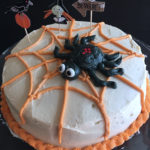
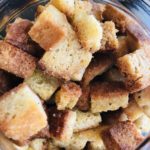
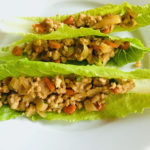

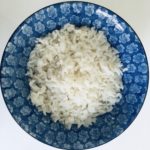
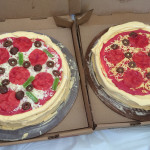
Heather @CeliacFamily says
Great review. Thanks for sharing your insight. I agree with your take on the “Party Pooper.” I try not to dwell on the subject of our diet restrictions, but if someone is curious or wants to know more, I’m happy to discuss it with them. There are so many people out there who haven’t been diagnosed yet. Why not share our knowledge of celiac disease with people who are interested and may have similar symptoms? It doesn’t have to be a depressing conversation – simply a discussion about how your health has changed for the better thanks to a new g-free diet/lifestyle.
MarylandCeliac says
What a great thorough review! I am really surprised about the online resources. There are so many people on twitter who would have been happy to help her with this! I gained weight eating gluten free and I know many people do. I definitely recommend talking about celiac, so people understand and can share info. I was concerned about her comments on the acknowledgements page where she thanked Tim for wiping pretzels off his lips before kissing her and the graham cracker kisses she gets from her son – cross contamination?? I’m glad that the book mostly has good info.
grandstreet says
Thanks for this review–you helped me decide that I don’t really need the book. But it sounds like a friendly way to help people understand CD.
I agree with you about “not being a party-pooper”. I find that people are often fascinated with how eliminating Gluten made such a difference. Also, if someone asks, it is important to speak up about what might make you sick. Why spend all night famished, when you could have just asked about the ingredients.
Linda says
That’s an excellent review. I wasn’t thinking about buying the book, but I enjoyed reading the review and getting a feel for what is in the book. Thanks.
Gluten-Free Joy says
Great review. I look forward to reading the book. Happy to know ahead of time that there aren’t a ton of recipes so I am not disappointed. I have grown very comfortable talking about Celiac and food allergies and also feel that certain people are drawn to me to learn more about eating properly for their bodies. I have learned a lot on this journey and love to help others who are new and need help finding the way.
Karen Robertson, Cooking Gluten-Free! author says
I think this book could be great for teenage girls having a hard time adhering to the gluten free diet. There are many teens that struggle with being different as celiacs –some of them don’t feel sick eating gluten even though there are other less immediate consequences –these teens eat gluten to fit in. Having a hip role model can be beneficial. I especially like how Elizabeth is pushing away that gorgeous looking bread.
alison says
Thanks everyone! I enjoyed reading the book and writing the review. She commented on Twitter that she thought it was a fair review – that made me feel good!
Karen,
I think you have a great point about the book appealing to teenage girls or young women! I didn’t think of that, but you are right. She should have mentioned your cookbook which is wonderful!
Bonnie, The Sensitive Diner says
Thanks for this candid review! If, through her celebrity status, Elisabeth brings more attention to food allergies, all the better! And, if the term “G-Free Diet” starts taking on a life of its own, there’s probably good that can come of that as well…. especially for all of us who help others cope with these food allergies. The book definitely sounds like one that will probably be available at airport bookstores soon.
Betty says
I am so happy she wrote this book,because of who she is can reach a lot of people. It will make more people learn about this disease since we can’t go by what Dr’s tell us. I was diagnosed is 2001 by blood work and biopsy I had never heard of this disease before. I knew I had lots of problems for years really about the same story as others. I too gained a lot of weight after the diet. I will never go back to eating gluten I know how sick it makes me even if I get it by mistake it only takes very little. Thanks again Hasselbeck.
selma says
Thanks for your professional review of this article. Elizabeth brings much publicity to the disease and struggle, but its good to know that there are Registered Dietitians that can bring the professional view that make a real difference in the day to day life of so many. Selma
Kate says
This is a wonderful review. I have read the book and agree that some of the cutesy catch phrases, or chapter titles are misleading. However, overall, I did learn one or two new facts or strategies from each section of the book to further support my gluten free lifestyle.
Gayle Kennedy says
I’m almost 80, and had never heard the name Elizabeth Hasselbeck, but after seeing comments about a TV interview and about the book, I decided to read the critique that arrived on the CELIAC LISTSERV this morning 5/11/’09. Like Miss Hasselbeck, I self-diagnosed, after seeing a long list of doctors gastro enterologists and other doctors in Minneapolis and Washington, DC. – over the course of ten years. One finally suggested I might have Whipple’s disease, and I then went to the library and found a book of gut symptoms and related diseases. I read about Whipple’s and crossed it off the list of possibilities, but kept reading. Came to the page on Coeliac Disease, and after reading it twice, and finding that all the information related to my symptoms, I went home and removed from my diet anything connected with gluten. The change was dramatic. Within a week I was a new person. At the next doctor’s appointment the doctor seemed angry that I had self diagnosed, and insisted that he would put me back on a high gluten containing diet for two months and then he would do an intestinal biopsy. My reply was rather rude. I said, “Like hell you will!”
At the time I was teaching 9th grade English, taking care of aged and ill parents, and running a house-hold. I had no desire to make myself ill in order to have a diagnosis that seemed to have already been proven.
I am not so sure about the book listing roe as something to be avoided. In my kitchen full of cookbooks, roe is a word that means fish eggs. Roux is a French word that means a mixture of fat and flour, and I rather suspect that she was writing about roux and not roe.
Gayle Kennedy says
I think there is a small but unfortunate error in Elizabeth Hasselbeck’s book. She writes a list of things to eliminate from one’s kitchen and includes “roe” as one thing to avoid. Roe is a word that means fish eggs. It is pronounced the same as the word “row” – as in “a row of houses”, or “row a boat”. Roux is a French word that refers to a combination of fat and flour – usually a gluten-containing flour. I think it should be pointed out that there is an error, and in any further printing the word should be changed.
Beth says
Ha – I remember that article you wrote – that’s where I thought she got the name of her book from!
MIL says
Excellent work!
alison says
I too agree with some of you that the fact that Elisabeth is using her celebrity status to bring attention to celiac disease is a good thing!
As far as roe goes, I am the one that mentioned roe as something to watch out for, not the author of the book. Sometimes roe has soy sauce or wheat starch added to it.
Beth — yeah, I think I inspired her whole book. ha ha!
Ali says
What a wonderful, balanced review with so much useful information. I’m giving away 5 copies of this book on my blog over the next month or so, so it’s good to know that while it’s not perfect, it is a useful book, especially for someone new to a gluten-free diet.
Jennifer says
I just finished this book and loved it! I was already a fan of Elisabeth’s so it wasn’t difficult for me to find a reason to purchase the book, being gluten intolerant.
Being the only “G Free” person in my house, I loved her advice on keeping g-full and g free foods separate and keeping your sanity as well. She does keep a great positive perspective and that was great encouragement for me as I do not always feel that way.
Her restaurant guide was also great. All in all, I gained some new info and will probably be referring to this book again soon.
Thanks for your review!
Lindsay says
I was so glad she included a chapter on using GF shampoos, soaps, & makeup. I was on a gf diet, but still having symptoms & my dr suggested I keep my diet the same, but change my lotions, shampoo, makeup, etc. So I did & I had WAY less hair fall out in the shower & in my brush, no more red eyes, no more headaches or strange fevers. I think gf personal products are a lifesaver & loved that she offered examples of products.